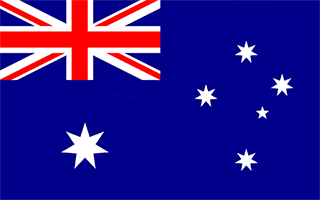Facts and Data
Webpages:
Official Unesco Page
Kakadu National Park (Department of Sustainability, Environment, Water, Population and Communities )
View photos from OUR PLACE the World Heritage collection
kakadu.com.au
The Official Site for Australian Travel and Tourism Australia
Protectedplanet.net
Basis Data:
Unesco World heritage since: 1981
Size of heritage: 1,980,995 ha
Coordinates:
Longitude: 132,833°
Latitude: -11,167°
Summary
This unique archaeological and ethnological reserve, located in the Northern Territory, has been inhabited continuously for more than 40,000 years. The cave paintings, rock carvings and archaeological sites record the skills and way of life of the region’s inhabitants, from the hunter-gatherers of prehistoric times to the Aboriginal people still living there. It is a unique example of a complex of ecosystems, including tidal flats, floodplains, lowlands and plateaux, and provides a habitat for a wide range of rare or endemic species of plants and animals.
Location on Map
Show bigger map on Openstreetmap
Introduction
Kakadu National Park is a UNESCO World Heritage site located in the Northern Territory of Australia. Spanning over 19,000 square kilometers, it is one of the largest national parks in the world. Kakadu is renowned for its exceptional natural and cultural significance, boasting diverse ecosystems, ancient rock art, and a rich indigenous heritage.
History
The history of Kakadu National Park dates back thousands of years, with evidence of Aboriginal occupation dating back at least 65,000 years. The park has been home to the Bininj/Mungguy people for generations, who have a deep spiritual connection to the land. Their cultural practices and traditions have shaped the landscape and continue to be an integral part of the park's identity.
European exploration of the area began in the early 19th century, with the arrival of British settlers. The park's name, Kakadu, is derived from the mispronunciation of "Gagudju," the name of one of the indigenous language groups in the region. The park was officially established in 1979 and was inscribed as a UNESCO World Heritage site in 1981, recognizing its outstanding universal value.
Natural and Cultural Significance
Kakadu National Park is a haven for biodiversity, encompassing a wide range of ecosystems, including wetlands, savannah woodlands, and sandstone escarpments. It is home to over 2,000 plant species, one-third of Australia's bird species, and numerous reptiles, mammals, and fish. The park's wetlands, such as the famous Yellow Water Billabong, provide critical habitat for migratory birds and support a thriving ecosystem.
The park is also renowned for its exceptional rock art, which provides a glimpse into the rich cultural heritage of the indigenous people. The rock art sites, some of which are over 20,000 years old, depict stories, ceremonies, and the daily lives of the Aboriginal people. These ancient artworks are not only a testament to the enduring connection between the indigenous people and the land but also provide valuable insights into Australia's prehistoric past.
Current State
Kakadu National Park continues to be managed jointly by the traditional owners, the Bininj/Mungguy people, and Parks Australia. This collaboration ensures that the park's cultural values are respected and preserved while allowing visitors to experience its natural wonders.
Visitors to Kakadu can explore the park through various activities, including guided walks, boat cruises, and 4WD tours. The park offers a range of accommodation options, from camping grounds to luxury lodges, allowing visitors to immerse themselves in the park's unique environment.
However, Kakadu faces several challenges, including invasive species, wildfires, and the impact of climate change. The park's management is actively working to mitigate these threats and ensure the long-term sustainability of the park.
Conclusion
Kakadu National Park is a remarkable UNESCO World Heritage site that showcases the natural and cultural treasures of Australia's Northern Territory. With its diverse ecosystems, ancient rock art, and rich indigenous heritage, it offers a unique and immersive experience for visitors. By preserving and protecting this extraordinary site, we can ensure that future generations can continue to appreciate and learn from its exceptional universal value.
